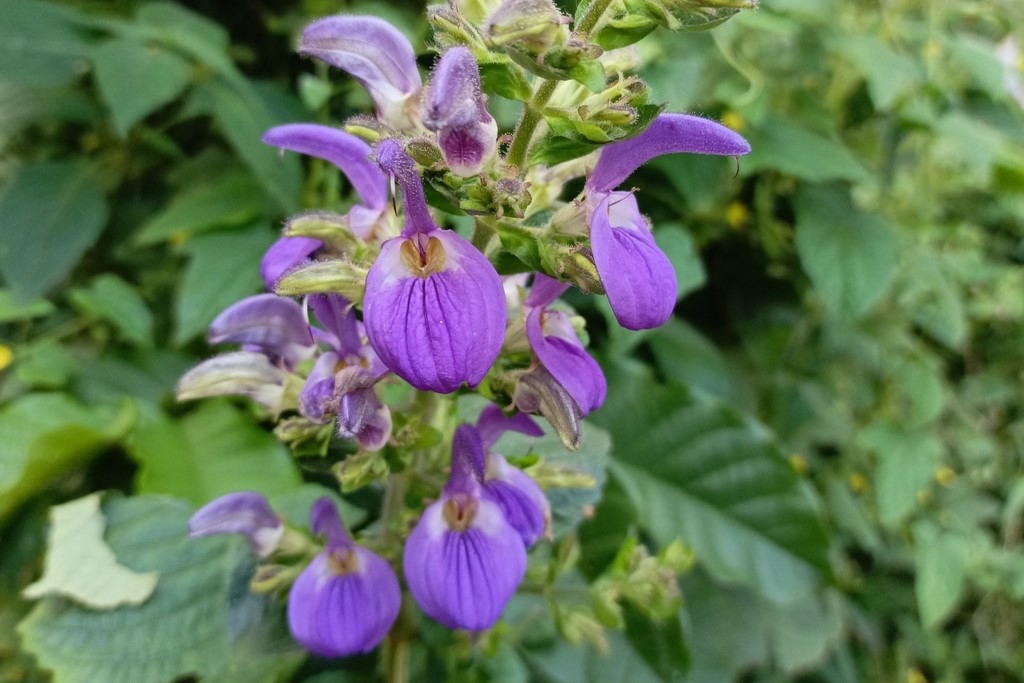
Soft-wooded aromatic shrub, up to 5m tall.
Leaves opposite, broadly ovate, sometimes purple-tinged, 10-40cm long, cordate at base, coarsely toothed margins. Inflorescence is open, branched, purplish, and 10-40cm long. Corolla pale to bright blue, mauve, violet or purple, 2-lipped; upper lip 25-52mm, lower lip 17-40mm.
Capsule 25-45mm, glandular-hairy.
Usually found in wet depressions, understory, or forest margins, often forming colonies
Insects: Host plant for the butterfly Salamis parhassus (Green Commodore) caterpillars.
Soil: May contribute to understory soil stabilization.
Wildlife: Flowers attract a range of pollinators. Leaves and stems may be browsed by herbivores. Shelter for insects and small fauna.
Ecosystem Services: Erosion control, colony growth for restoration, and landscape structure
Pollinated by bees and other insects.
Flowers are showy, providing nectar for various pollinators.
Seeds are wind-dispersed.
Fruits (capsules) are not known to be a major wildlife food, but may support some granivorous insects.
Potential use for shelter, perching, or feeding on insects visiting the flowers.
Specific bird associations for overall forest biomes that these plants contribute towards, but not unique to Brilliantasia sp.
Collect mature capsules (dry, split when ripe), carefully extract seeds. Sow on moist, well-draining medium, keep warm and humid until germination. Best planted in spring or early in the rainy season.
Take stem cuttings with at least two nodes. Root in moist, well-drained medium, keep humid and shaded until roots form. Roots within weeks.
High success rates if cuttings are semi-hardwood or softwood and taken during active growth.
Historical Uses: Used as a medicinal plant in East and Central Africa.
Medicinal Uses: Cited by traditional healers (esp. Rwanda) for multiple diseases. Used against skin/foot disorders, poison antidote, in pregnancy in S. Nigeria; in mixtures for smallpox by Yoruba.
Pharmacological action: Some evidence for antibacterial activity, relaxant action on vascular muscle (lab studies of congeners).
Cultural Significance: Important in traditional medicine and as a part of forest conservation ethos; featured in sacred/heritage forest traditions of Rwanda
